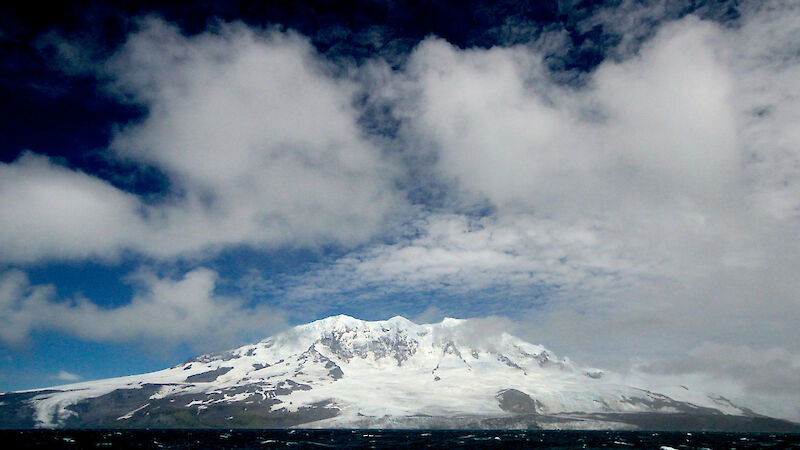Regional climate
Heard Island and McDonald Islands are located in the latitudes known as the 'furious fifties', characterised by strong westerly winds and low pressure systems.
Local climate
The local climate on Heard Island is significantly influenced by the islands perennial ice cover and mountainous terrain, particularly the effect of Big Ben on precipitation, snow accumulation, winds and cloud cover.
The relatively low-lying McDonald Islands are free of permanent ice. They are windy but do not experience the highly changeable conditions of Heard Island.
Meteorological records at Heard Island are incomplete, but there is considerable evidence that the local climate is changing.
Observations at Atlas Cove indicate an increase in average annual air temperature of almost 1°C between the periods 1948–1954 and 1997–2001. This mirrors similar changes interpreted from observations at nearby Îles Kerguelen and elsewhere in the southern Indian Ocean.
These increased temperatures are having a significant effect on the Heard Island environment, with glacial retreat leading to the formation of lagoons and freshwater lakes, and exposing new land for colonisation by plants and animals.
Weather – cold, wet, windy and cloudy
The maritime setting of the islands leads to low seasonal and daily temperature ranges, persistent and generally low cloud cover, frequent precipitation and strong winds.
Monthly average temperatures at Atlas Cove (at the north-western end of Heard Island) range from 0.0° to 4.2°C, with an average daily range of 3.7 to 5.2°C in summer and −0.8 to 0.3°C in winter. Air temperatures at Spit Bay, only 25km to the east can be remarkably different, with monthly mean temperatures as much as 1.3°C higher.
The winds at Heard Island are predominantly westerly and persistently strong. At Atlas Cove, monthly average wind speeds range between around 26 to 33.5 kilometres per hour. A maximum daily wind gust of greater than 180 kilometres per hour has been recorded on several occasions.
Annual precipitation at sea level on Heard Island is in the order of 1.3 to 1.9 m (water equivalent – some precipitation is in the form of snow), and records taken during the 1948-1954 ANARE expedition show precipitation occurring on 75 per cent of days.
The high relative humidity at Heard Island, together with the mountainous topography and strong winds, result in persistent cloud cover and often-spectacular cloud formulations.
Atlas Cove, in the north-west, experiences significantly greater cloud cover than Spit Bay at the eastern end of the island, in the lee of Big Ben.

